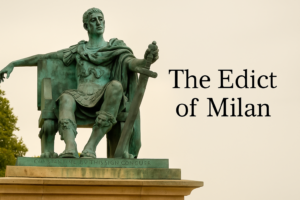Introduction
Mainstream LDS Mormonism, officially known as The Church of Jesus Christ of Latter-day Saints (LDS Church), represents one of the most distinctive and rapidly growing branches of Christianity. Founded in the early 19th century by Joseph Smith, this movement is characterized by its unique scriptures, theological doctrines, and commitment to modern-day revelation. This article explores the origins, beliefs, practices, and cultural impact of the LDS Church.
Origins and Development
The LDS Church was founded in 1830 by Joseph Smith, who claimed to have been visited by God the Father and Jesus Christ. According to Smith, he was led to a set of golden plates, which he translated into what is now known as the Book of Mormon. This text, along with the Bible, is considered scripture by adherents of the LDS faith. The church was initially established in upstate New York but faced significant persecution, leading to a series of migrations that eventually settled in Utah under the leadership of Brigham Young.
The establishment of the LDS Church was marked by a strong emphasis on prophetic leadership and the restoration of the original Christian church. Smith and his successors, including Brigham Young, emphasized the need to restore the lost priesthood authority and original teachings of Jesus Christ. The church’s move to Utah was part of a broader effort to create a religious community where members could practice their faith freely.
Core Beliefs and Theology
Mainstream LDS Mormonism is distinguished by several core beliefs
– Scripture In addition to the Bible, the Book of Mormon, the Doctrine and Covenants, and the Pearl of Great Price are considered sacred texts. The Book of Mormon, in particular, is viewed as another testament of Jesus Christ and an essential part of the church’s teachings.
– Modern Prophets The LDS Church believes in the continuation of divine revelation through modern-day prophets. The President of the Church is considered a prophet, seer, and revelator, providing guidance and direction for the church based on ongoing revelation from God.
– Eternal Families One of the central doctrines of LDS theology is the belief in eternal families. Mormons hold that family relationships can continue beyond this life through sacred temple ordinances, which are believed to bind families together for eternity.
– Plan of Salvation The church teaches a comprehensive Plan of Salvation, which includes pre-mortal existence, mortal life, and post-mortal life. This plan outlines the purpose of life, the need for Jesus Christ’s Atonement, and the eventual resurrection and judgment.
– Priesthood Authority The LDS Church emphasizes the importance of priesthood authority, which it believes was restored through Joseph Smith. There are two main priesthoods the Aaronic Priesthood and the Melchizedek Priesthood, both of which are essential for performing ordinances and leading the church.
Worship and Practices
Worship in the LDS Church is characterized by several distinctive practices
– Sunday Services LDS worship services typically include sacrament meetings, where members partake of the sacrament (bread and water) in remembrance of Jesus Christ’s sacrifice. These meetings also feature talks given by members of the congregation, focusing on various aspects of gospel teachings.
– Temples and Ordinances Temples are sacred buildings where important ordinances, such as baptisms for the dead, eternal marriages, and endowments, are performed. These ordinances are considered essential for spiritual progression and eternal salvation.
– Missionary Work The LDS Church places a strong emphasis on missionary work, with many young members serving as missionaries around the world. Missionaries focus on sharing the gospel, performing service, and supporting local congregations.
– Humanitarian Efforts The church is involved in various humanitarian efforts, including disaster relief, food distribution, and community development projects. These efforts reflect the church’s commitment to serving others and alleviating suffering.
Cultural Impact
Mainstream LDS Mormonism has had a significant impact on the cultural and social landscape in various regions, particularly in the United States and areas with large Mormon communities
– Cultural Identity The LDS Church has fostered a distinct cultural identity among its members, including unique practices, values, and traditions. This includes a focus on family life, self-reliance, and community service.
– Education and Media The church operates a vast educational system, including Brigham Young University and other institutions. It also has a significant presence in media through its publishing house, film productions, and broadcasting services.
– Community and Social Contributions LDS communities often emphasize strong family values, community involvement, and self-reliance. The church’s emphasis on service and humanitarian efforts contributes to its positive impact on society.
Criticism and Controversies
The LDS Church has faced various criticisms and controversies over the years
– Historical Issues Critics have raised concerns about historical events related to the church, such as the practice of polygamy, which was officially renounced in 1890 but continues to be a point of discussion.
– Theological Differences Mainstream Christianity often views LDS beliefs as divergent from traditional Christian doctrine, particularly regarding the nature of God, the concept of the Trinity, and the use of additional scriptures.
– Social Issues The church has faced scrutiny over its positions on social issues, such as LGBTQ+ rights and gender roles. The church’s stance on these issues has been a subject of debate both within and outside the faith community.
Global Reach and Future Directions
The LDS Church has expanded its presence globally, with millions of members worldwide. Its international growth reflects its commitment to missionary work and outreach efforts. As the church continues to navigate contemporary challenges, including social issues and cultural changes, it remains focused on its core mission of spreading the teachings of Jesus Christ and serving its members.
Conclusion
Mainstream LDS Mormonism is a distinctive and influential branch of Christianity, characterized by its unique scriptures, modern-day prophetic leadership, and emphasis on family and eternal relationships. Its impact on global Christianity, cultural identity, and social contributions highlights its significance within the broader Christian tradition. While facing various challenges and criticisms, the LDS Church continues to evolve and adapt, maintaining its commitment to its foundational beliefs and mission.










